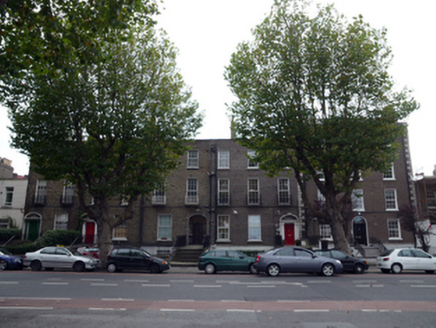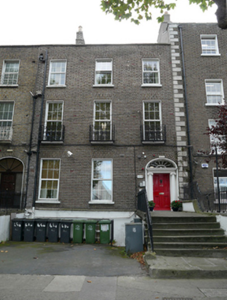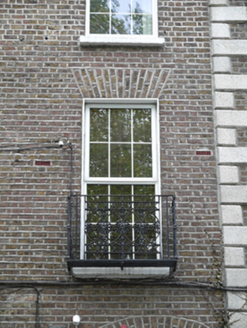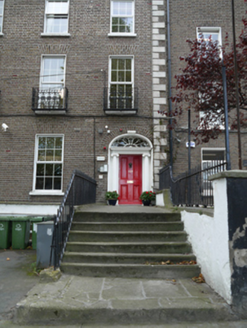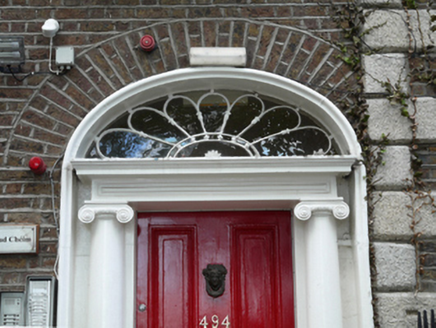Survey Data
Reg No
50011061
Rating
Regional
Categories of Special Interest
Architectural, Artistic
Original Use
House
In Use As
Apartment/flat (converted)
Date
1820 - 1840
Coordinates
316111, 235657
Date Recorded
12/10/2011
Date Updated
--/--/--
Description
Terraced three-bay three-storey house over exposed basement, built c.1830, as one of terrace of four similar houses with three-storey rendered extension abutting entire rear elevation. Now in multiple occupancy. M-profile slate roof, with further hipped span over extension and set behind parapet wall with granite coping and replacement uPVC hopper and downpipe breaking through to east end. Stepped brick and rendered chimneystacks to west party wall with clay pots and further stack to extension. Yellow brick walls laid in Flemish bond on granite plinth course over rendered basement walls. Gauged brick flat-arched window openings with patent rendered reveals, painted granite sills and replacement uPVC windows throughout. Decorative cast-iron balconettes to first floor windows. Gauged brick segmental-headed door opening with moulded masonry surround and original painted masonry Ionic doorcase. Original flat-panelled timber door flanked by engaged Ionic columns on plinth blocks supporting panelled lintel cornice and original petal fanlight. Door opens onto extended granite platform with six nosed granite steps enclosed by original wrought-iron railing with further platform and step to street. Front garden now paved for parking and open to street. Rear site enclosed by tall rendered wall and metal door.
Appraisal
The North Circular Road was laid out in 1763, and gradually developed over the next one hundred years. An Act of that year called for the making of more convenient approaches to the city. It was partly financed by toll gates located at the Park, Aughrim Street, Phibsborough and Dorset Street. It became a fashionable carriage promenade in the 1780s. This terraced brick house was built as one of four as part of a greater terrace of varying house types. This section of the street remained largely undeveloped until the Victorian period, with this terrace predating most houses on the street. This house is one bay wider than the remainder and retains an intact doorcase with an original petal fanlight, intact steps and railings to the entrance, and ornate balconettes. The building thus contributes to the intact architectural impression of this stretch of the streetscape which retains a residential character.
